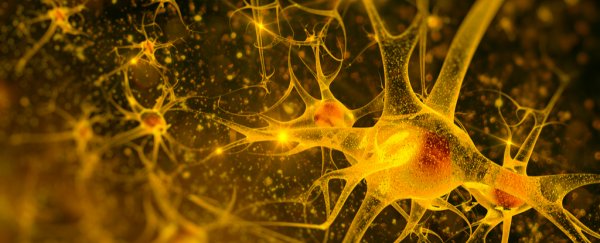New research on mice has suggested the symptoms produced by schizophrenia could largely be the result of defective cells that play an important role in supporting and insulating the nerve cells.
The discovery challenges conventional thinking that has concentrated on the nerve cells themselves, and could potentially open new ways to detect and treat the condition.
The research by an international team of scientists was based on what are known as chimeric mice, which had brains colonised by glial cells from human donors.
Schizophrenia is a difficult disease to get to the roots of. The condition gives rise to a variety of cognitive and emotional challenges, including paranoia, disorganised thinking, hallucinations, and delusions.
21 million people worldwide have the condition, which has been shown to run in families.
Genetic studies have identified mutations that could be responsible, with recent research hinting at over-eager pruning mechanisms cutting back a few too many connections in the brain during formative years.
But as with many neurological conditions it's unlikely that there's a single cause responsible for producing the array of symptoms.
In this new research, it's not differences in the nerve cells that are to blame, but problems with their nanny cells.
"It was through studies of mice with human glial cells that we succeeded in testing how dysfunctional glial cells may cause abnormalities in the formation of the brain's neural networks, which may in turn cause severe anxiety, anti-social behaviour and severe sleep problems," says lead researcher Steven Goldman from both the University of Copenhagen and the University of Rochester.
Glial cells come in a variety of forms and can be found throughout the nervous system, taking on a bunch of supportive tasks to allow the nerve cells do what they do best – pass on messages. This could be in the form of support, wrapping themselves around the nerves, or by surrounding the nerves to clean up stray chemical messages.
While dysfunctional helper cells have been associated with schizophrenia before, it's been assumed to be less important than abnormalities in the neurons themselves.
The problem with studying the behaviours of different brain cells in association with schizophrenia is being sure that the kinds of brain cells we look at in animal models act like ours to give rise to the same condition.
In this research the scientists took glial progenitor cells from patients diagnosed with schizophrenia and transplanted them into the brains of young mice. They then compared them with the same kinds of cells taken from subjects without schizophrenia.
That way they could be confident that similar behaviours in the mice were the product of the same pathology in humans.
Sure enough, the stem cells derived from the subjects with schizophrenia showed an unusual pattern of migration as they spread through the mice brains, leading to lower numbers of a type of glial cell that was responsible for mopping up neurotransmitter chemicals in the gaps between neurons.
The research hints at a faulty mechanism telling the glial cells where to stop and change into cells that perform their jobs.
When the mice were observed for behavioural differences, they showed clear signs of anxiety, sleep disruption, and anhedonia.
"We see these problems in the mice, just as in human patients," says Goldman.
"This is an important discovery because it will now enable us to develop methods that can counteract the unwanted development of progenitor cells."
Using stem cells to repair dysfunctional tissues in the brain is still in its early days, although treating conditions such as Parkinson's disease with embryonic stem cells has seen some significant leaps in recent years.
It's not hard to imagine this kind of research leading to similar therapies in patients who are diagnosed early with schizophrenia, or even better diagnostic tools to identify who might be at risk of developing the debilitating symptoms later in life.
This research was published in Cell.
